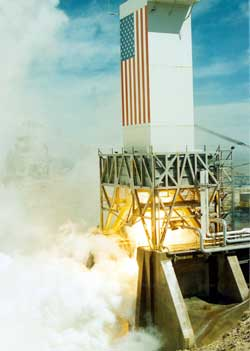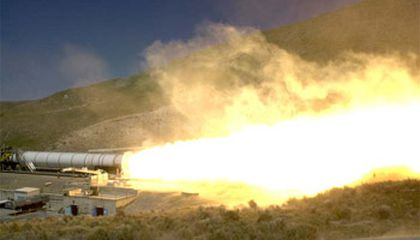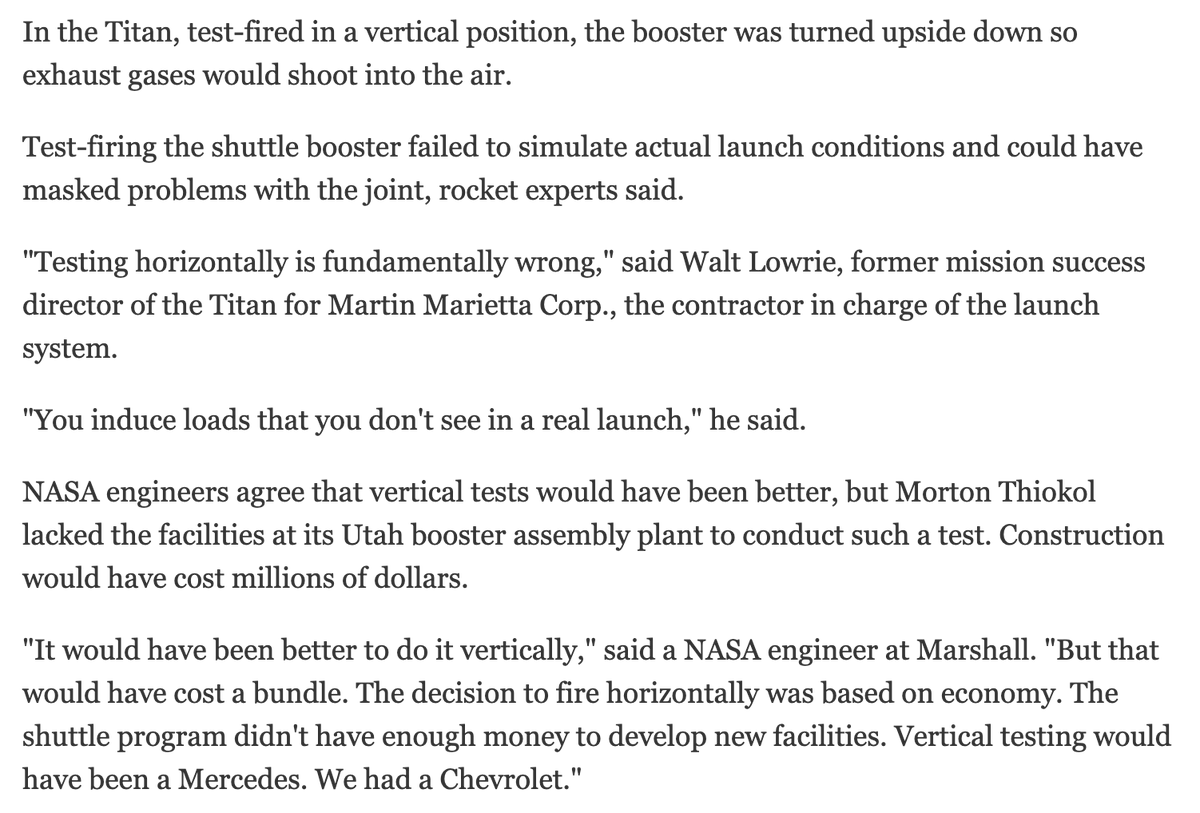Here's a fun rabbit hole I fell into. Why are some solid-rocket motors tested horizontally, while others are tested vertically. I had wondered about this a long time.
The answer is that there was no clear consensus which was better. In the 1980s, Thiokol, maker of the Space Shuttle Solid Rocket Motor (SRM), preferred horizontal tests. United Technologies, maker of the Titan SRM, tested vertically, nozzle-up.
After the Challenger accident, this difference in approach turned into a public spat -- as you can see from these ¶s from "Shuttle Booster Design Couldn't pass Titan Test" in the Orlando Sentinel on April 6, 1986.
Al McDonald, in his Challenger memoir, gets pretty salty remembering this article, arguing that "horizontal testing was more severe and more representative of the Shuttle flight environment and that the most benign way to test was nozzle-up, as with the Titan SRMs." (p. 301)
McDonald felt that the competition was "kicking a man when he's down." He also notes, with a certain glee that, twelve days after the article appeared, a Titan SRB failed spectacularly. "If you live in a glass house, don't throw stones." (p. 301)
There *was* a debate about whether to test the Redesigned SRM (RSRM). The Rogers Commission recommended that "Full consideration should be given to conducting static firings of the exact flight configuration in a vertical attitude."
In the end, though, McDonald and others prevailed. See pp. 300-302 and 446-447 of McDonald for his arguments. Both @nasa and a @theNASEM panel on the redesign ultimately agreed that horizontal testing was appropriate for the RSRM. https://www.nap.edu/read/10797/chapter/3?term=horizontal#10
It's not like this settled the issue though. As best I can tell, United kept testing the Titan IVA SRMU vertically. And so did ATK for the life of the Titan IVB program though ~2000.
https://spaceflightnow.com/news/n0004/06titan4test/
https://spaceflightnow.com/news/n0004/06titan4test/

 Read on Twitter
Read on Twitter




